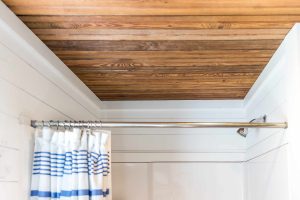Editorial Note: We earn a commission from partner links on Forbes Advisor. Commissions do not affect our editors’ opinions or evaluations.
Renovating your home can be a great idea for a lot of reasons. Not only will you be able to increase your own quality of life, but you’ll increase the home’s resale value and your net worth.
The only downside is that home renovations can be very expensive, ranging up into the tens of thousands of dollars or more in many cases. And while it’s always best to save up so you can cover these expenses in cash, the reality is that’s not always possible.
The good news is that there are a lot of different options for home improvement loans that can front you the cash you need—for a price, of course. We’ll help you sort out your different options and pick the best solution for you.
What Is a Home Improvement Loan?
There isn’t any official legal definition of a home improvement loan. But broadly speaking, it’s used to describe some sort of financing you take out for home improvement projects. In fact, you can use several different types of financing as a home improvement loan, including personal loans, home equity loans and home equity lines of credit (HELOCs).
Types of Loans for Home Improvement
The most common types of home improvement loans are:
Personal Loans as a Home Improvement Loan
Personal loans are probably the most common type of home improvement loans. They can be used to pay for just about anything, although debt consolidation and home improvements are two of the most common uses. Plus, personal loans are available from a range of traditional and online lenders so it’s easy to check your eligibility, shop around and apply for the most favorable terms.
A personal loan is a type of unsecured debt, which means that it’s not tied to any collateral. This means that if you fail to repay the loan for some reason, creditors can’t take your house or other collateral (although they can ruin your credit and find other ways to get the money back). This makes a personal home improvement loan a bit riskier for lenders, and they generally pass that cost onto you in the form of higher interest rates.
But because personal loans are relatively simple compared to other options, you can get your money quite fast—sometimes within a day or two. Keep in mind, you’ll get the money in lump-sum payment. This may not be ideal if you’re DIYing your home improvement projects over time rather than paying a contractor to finish it all at once.
Home Equity Loans as a Home Improvement Loan
Home equity loans are another type of loan that’s commonly used to pay for home renovations. As a type of secured loan, home equity loans use the equity you have in your house as collateral for the loan. This means that if you default on the loan, your lender legally can take your home away from you. Because of this guarantee, this type of loan is safer from a lender’s standpoint and is often a bit cheaper for the borrower.
The tricky part with home equity loans is understanding how equity works, and how you can use it to borrow against your home. Equity just refers to how much of your home you own. For example, if you have $150,000 left on your mortgage and your home is worth $200,000, you have $50,000 in equity. As you pay off your mortgage, the amount of equity you have in your home will increase until you own the home outright.
You can expect to be able to borrow up to 85% of your home equity, according to the Federal Trade Commission. If you have $50,000 of equity, that means you’re generally limited to borrowing up to $42,500. So if you don’t have much equity in your home—perhaps because your property value dropped, or you just started paying back a mortgage—you may not be able to borrow much, if anything.
Because a home equity loan is similar to having a second mortgage on your house, it’s also a bit trickier to get than a personal loan. Start by contacting your current lender to see what options are available. You’ll likely need to go through a more extensive underwriting process, which may include paying for a home inspection and closing costs. If you go through all of that and are approved, you’ll get your money in one large lump sum.
Home Equity Line of Credit as a Home Improvement Loan
Home equity lines of credit—or HELOCs—are a sort of blend between a home equity loan and a credit card. HELOCs give borrowers access to a limited amount of funds on an as-needed basis, which means the payment might change as you borrow money. But that also means you’re not paying to borrow money you don’t yet need, which can be handy if you’re tackling home renovations over time.
Like home equity loans, HELOCs are secured by the borrower’s home, and homeowners can commonly borrow up to 85% of their home’s value—less their outstanding mortgage balance. Lenders also typically prefer borrowers to have at least 20% equity in their home to be eligible for this type of financing. HELOCs also require a lengthier underwriting process, which can be more costly and time-consuming than a simple personal loan.
Which Home Improvement Loan is Right for Me?
Here are some questions to consider when deciding which type of home improvement loan is right for you. But remember, it’s always best to speak with a financial advisor if you need help, especially if you’re thinking of tackling a very costly project.
- Do you have equity in your home? If not, you won’t be able to use a home equity loan or HELOC.
- How important is it to get quick cash? Personal loans can provide faster funding than HELOCs and home equity loans.
- How good is your credit? It may be harder to get an unsecured personal loan than a secured home equity loan or HELOC if your credit isn’t that great.
- How important is it to save money? Home equity loans and HELOCs often come with lower interest rates than personal loans—but you’ll need to consider closing costs.
- Do you need your money in one lump sum or over time? If you’re paying for all of your home improvements at once, a home equity loan or personal loan may be the better option. If you’re doing your project over time, a HELOC allows you to use credit as you need it.
Common Home Improvement Loan Uses and Costs
Home improvements can be as cheap or as expensive as you want and may include everything from replacing cabinet hardware to building an addition. If you’re considering a home improvement loan for a large project, try to estimate the total cost of the project before you apply for the loan. This can be difficult to do, but you’ll be less likely to run out of money in the middle of the project if you have a likely budget in mind.
According to the 2020 Cost vs. Value Report from Remodeling Magazine, this is roughly how much people spend on common home improvement projects:
- Replacing a garage door—$3,695
- Doing a minor kitchen remodel—$23,452
- Doing a major kitchen remodel—$68,490
- Adding a wooden deck—$14,360
- Replacing vinyl siding—$14,359
- Replacing an entryway door—$1,881
- Replacing an asphalt shingle roof—$24,700
- Building a new master suite addition—$135,547
- Adding a manufactured stone veneer around house—$9,357
Home Improvement Loan Pros & Cons
Alternatives to Home Improvement Loans
Personal loans, home equity loans and HELOCs are all common ways that people borrow money to upgrade their houses. But they’re not the only ways to fund a home improvement project. Here are two other options people sometimes use:
0% APR Credit Cards
Putting your home improvement project on a credit card is a risky move, but if you’re careful and you use the right credit card, it could work. This strategy works best if you use a credit card with a 0% APR introductory period that lasts for several months or longer—often between 12 and 21 months.
When using a 0% APR card, limit yourself to borrowing what you can pay off entirely within the interest-free period. This rule makes the strategy best for small projects such as minor home repairs and upgrades. For example, it wouldn’t be a good idea to put your entire $135,000 master suite addition on a credit card—assuming you could even qualify for a credit limit that high.
Cash-Out Mortgage Refinance
For larger projects, another option is to use a cash-out refinance. This is where you access your home’s equity by refinancing for a higher amount than you owe on your old mortgage. The remainder is paid to you in cash. So, for example, if you owe $150,000 on your mortgage and refinance it with a new $200,000 mortgage, you’ll get $50,000 back in cash to use for home improvements.
Refinancing is no small task, though. There are a lot of things to consider, such as how much more you’ll pay in interest over time with the new loan and whether you can afford the new payments. But for some people, it’s a good way to get the money they need for home improvements.
Read the full article here














